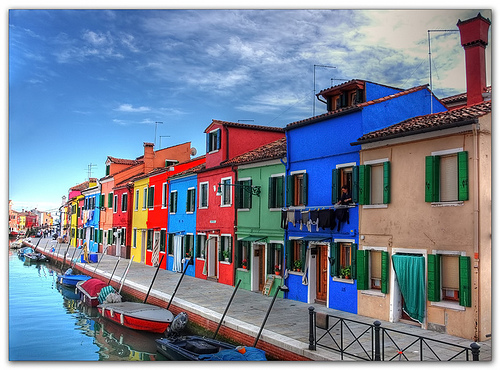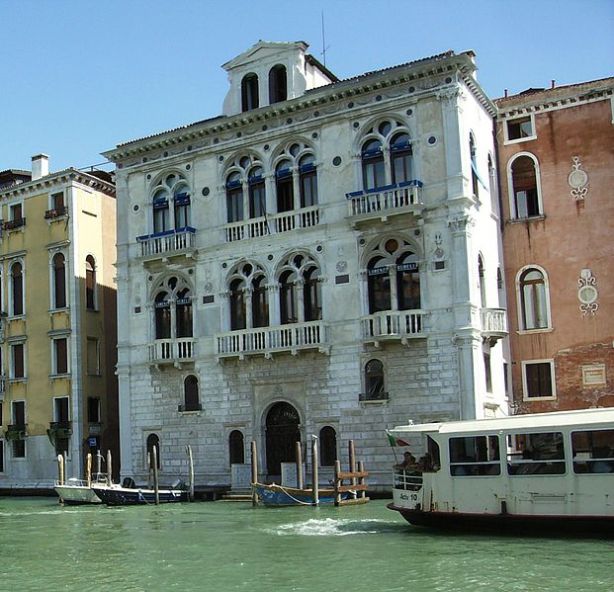1.Murano island
Murano is a series of islands linked by bridges in the Venetian Lagoon, northern Italy. It lies about 1.5 km north of Venice and measures about 1.5 km (0.93 mi) across with a population of just over 5,000. It is famous for its glass making, particularly lampworking. It was once an independent comune, but is now a frazione of the comune of Venice.
Murano was initially settled by the Romans then, from the sixth century, by people from Altinum and Oderzo. At first, the island prospered as a fishing port and through its production of salt. It was also a centre for trade through the port it controlled on Sant’Erasmo. From the eleventh century, it began to decline as islanders moved to Dorsoduro. It had a Grand Council, like that of Venice, but from the thirteenth century, Murano was ultimately governed by a podestà from Venice. Unlike the other islands in the Lagoon, Murano minted its own coins.
Early in the second millennium, hermits of the Camaldolese Order occupied one of the islands, seeking a place of solitude for their way of life. There they founded the Monastery of St. Michael (Italian: S. Michele di Murano). This monastery became a great center of learning and printing. The famous cartographer, Fra Mauro, whose maps were so crucial to the European exploration of the world, was a monk of this community. The monastery was suppressed in 1810 by French forces under Napoleon, in the course of their conquest of the Italian peninsula, and the monks were expelled in 1814. The grounds then became Venice’s major cemetery.
In 1291, all the glassmakers in Venice were forced to move to Murano due to the risk of fires.[2] In the following century, exports began, and the island became famous, initially for glass beads and mirrors. Aventurine glass was invented on the island, and for a while Murano was the main producer of glass in Europe. The island later became known for chandeliers. Although decline set in during the eighteenth century, glassmaking is still the island’s main industry.
In the fifteenth century, the island became popular as a resort for Venetians, and palaces were built, but this later declined. The countryside of the island was known for its orchards and vegetable gardens until the nineteenth century, when more housing was built.
Attractions on the island include the Church of Santa Maria e San Donato (known for its twelfth century Byzantine mosaic pavement and said to house the bones of the dragon slain by Saint Donatus), the church of San Pietro Martire with the chapel of the Ballarin family built in 1506 and artworks by Giovanni Bellini, and the Palazzo da Mula. Glass-related attractions include the many glassworks, some Mediaeval and most open to the public, and the Murano Glass Museum, housed in the large Palazzo Giustinian.
2.Burano island
Burano is an island in the Venetian Lagoon, northern Italy; like Venice itself, it could more correctly be called an archipelago of four islands linked by bridges. It is situated near Torcello at the northern end of the Lagoon, and is known for its lacework and brightly coloured homes.
Burano is also known for its small, brightly-painted houses, popular with artists. The colours of the houses follow a specific system originating from the golden age of its development; if someone wishes to paint their home, one must send a request to the government, who will respond by making notice of the certain colours permitted for that lot.
Other attractions include the Church of San Martino, with a leaning campanile and a painting by Giambattista Tiepolo (Crufixion, 1727), the Oratorio di Santa Barbara and the Museum and School of Lacemaking.
3.Torcello island
Ponte del diavolo
Torcello is a quiet and sparsely populated island at the northern end of the Venetian Lagoon. It is considered the oldest continuously populatedregion of Venice, and once held the largest population of the Republic of Venice.
The former splendour of Torcello’s numerous palazzi, its twelve parishes and its sixteen cloisters has almost disappeared since the Venetians recycled the useful building material. The only remaining medieval buildings form an ensemble of four edifices.
Today’s main attraction is the Cathedral of Santa Maria Assunta, founded in 639 and with much 11th and 12th century Byzantine work, including mosaics (e.g. a vivid version of the Last Judgement), surviving. Other attractions include the 11th and 12th century Church of Santa Fosca, which is surrounded by a porticus in form of a Greek cross, and the Museo Provinciale di Torcello housed in two fourteenth century palaces, the Palazzo dell’Archivio and the Palazzo del Consiglio, which was once the seat of the communal government. Another noteworthy sight for tourists is an ancient stone chair, known as Attila’s Throne. It has, however, nothing to do with the king of the Huns, but it was most likely the podestà’s or the bishop’s chair.
Torcello is also home to a Devil’s Bridge, known as the Ponte del Diavolo or alternatively the Pontecello del Diavolo (devil’s little bridge)






